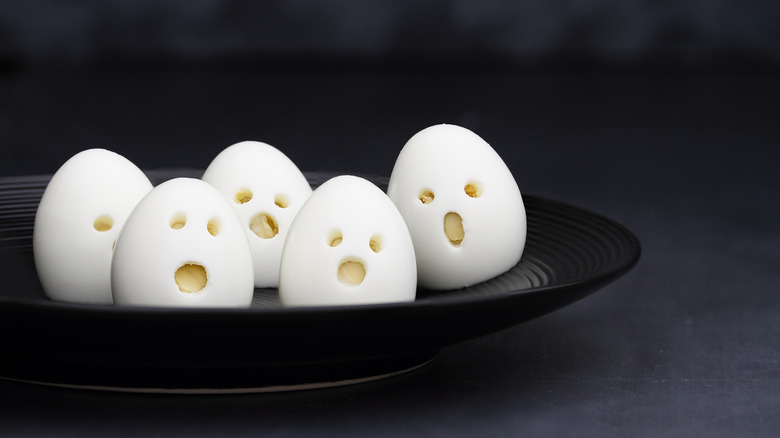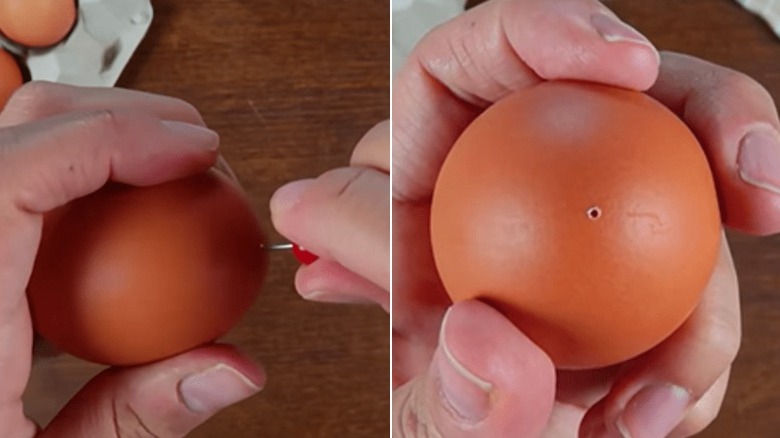The One Thing You Should Do Before Boiling Eggs
A raw egg straight from the carton has so much promise. It could become anything — a perfectly cooked omelet, a key ingredient in a batch of homemade chocolate chip cookies, or the scrumptious innards of an egg salad sandwich. The one thing that your egg doesn't want to become, however, is a scarred, pitted mess, thanks to your bad peeling job. Yes, no egg deserves to become permanently attached to its shell, transformed from a perfect oval into an unrecognizable glob.
Thankfully, it seems that everyone has a secret for how to boil eggs to perfection, creating a final product that's easy to peel and wouldn't dream of sticking to its shell. The Pioneer Woman, for instance, contends that eggs should be given a "hot start" and placed in gently boiling water as those given a "cold start" will be difficult to peel. Prevention advocates for adding 1/2 teaspoon of baking soda to the water and then proceeding to boil. This is supposed to elevate the pH level of your egg and make peeling a breeze. And chef Jennifer Hill Booker told Southern Living that eggs should be allowed to come to room temperature before boiling. Booker explains that putting fridge-chilled eggs in hot water creates a "violent reaction" that causes the "egg white to attach itself to the inside of the shell." Surely, your eggs deserve better.
And that's not all. There is one other simple (and sort of fun) way to ensure your egg reaches its full potential.
All this egg-peeling hack requires is a thumb tack
If you've tried all of these supposedly "tested and true" egg peeling methods and found that they didn't work for you, don't fret. There's one helpful hack that many frustrated egg peelers claim has saved their pristine eggy whites. All you need is a clean thumb tack (aka one that's been washed and is free of drywall, plaster, or other wall-related gunk). According to Life Hacker, this egg-peeling method was first introduced by culinary genius Jacques Pepin. Pepin recommends that you simply poke a tiny hole in the biggest side (aka the "bottom") of the egg. Apparently, this releases gases inside the shell, which in turn allows the whites to shift about freely.
So, what's the science behind this secret? As Exploratorium explains, some advocates of this method say the hole allows a bit of water to work its way between the shell and the egg inside, making it much simpler to peel. They go on to add that there are some who believe that as the egg cooks, the small hole allows gases to escape, making the egg less likely to break. (And as a bonus, an egg that doesn't have any cracks is easier to peel, too.)
While the chicken and the egg dilemma may never be solved, it seems that many are working diligently at creating a solution for hard-to-peel eggs. When it comes to perfecting your deviled egg recipe, this simple hack is definitely worth a try.

